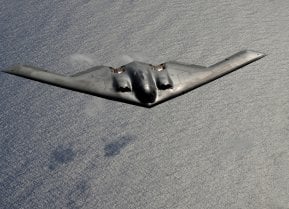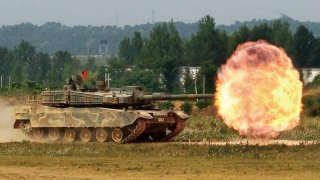South Korea’s Demographics Crisis is a National Security Threat
Cursed with a rapidly declining population, South Korea will find it difficult to maintain its national defense.
The decline in total population is an expected trend in nearly all developed countries. South Korea’s demographic woes are the most severe. It is evident that the problem is accelerating over time, resulting in a predicted military manpower shortage that will soon become a vulnerability. To prevent adverse changes in its demographic structure and maintain control of its security crises, South Korea must adopt bold and flexible socio-cultural policies to wield its population and national defense capabilities more efficiently.
Kim’s Gambit
South Korea recorded all-time low birth rates in 2023, unprecedented for an OECD (Organization for Economic Cooperation and Development) country. If the trend continues, South Korea’s current population of roughly 52 million will drop to 38 million by 2070, many of whom will be over sixty-five, equivalent to the country’s population in the 1960s and 1970s. However, many in Seoul do not view this issue through a national security lens as they would North Korean nuclearization. Rather, the declining birth rate is often dismissed as a “socioeconomic” rather than military concern.
Even more concerning, North Korea, a nuclear-armed threat to South Korea, maintains a higher birth rate than its southern counterpart. As the number of newborns in South Korea has fallen, North Korea has begun to match it. While young South Koreans are economically active, with a period of mandatory military service for men, North Koreans are mobilized by the Korean People’s Army (KPA) for longer terms of service. When North Korea’s newborns outnumber those of South Korea, they inevitably become military assets. Consequently, South Korea must consider such an imbalance a security threat.
Of course, there are other factors at play. the North Korean military is poorly fed and trained and does not have access to high-quality equipment, making its conventional firepower inferior in relation to its South Korean neighbors. Also, North Korea’s population of 26 million in 2023 is expected to decline after 2030, with its birth rate falling short of the minimum to maintain the population. Nevertheless, it is essential for South Korea’s national security that its population decrease at a slower rate than North Korea’s.
Pyongyang has militarized its entire population, including women. Pyongyang also has military organizations for all ages and a well-established authoritarian system that can draft citizens as needed. In 2022, less than 250,000 South Korean infants were born, which means the country may lack even the minimum required troops in the future if the constitution is not revised to reflect demographic changes. Seoul possesses advanced military assets and technology, but that doesn’t change the fact that it must deal with North Korea’s 1.2 million-strong military.
In a few decades, the massive workforce shortage will create an abnormal demographic structure in the country. South Korean armed forces will face extreme pressure as the number of available twenty-year-old conscripts drops from 330,000 in 2022 to 186,000 in 2039. If South Korea continues to draft only a limited portion of its total population, it could allow North Korean leader Kim Jong Un to resume the war between the two countries.
Declining Population’s Effect on the Military
The failure of tolerance-based immigration in Europe has created widespread concern and negative sentiment toward immigration in South Korea. This socio-cultural conservatism has contributed to the decrease in the country’s population. It has also led to the public’s reluctance towards military service, the increasing retirement of South Korean soldiers, and insufficient cadet applications for military academies.
As a result, the defense budget will inevitably be decreased. In the absence of a young, economically active population, fewer Koreans would pay for the budget, serve to operate military assets, and conduct defense research and development. This combination will inevitably make South Korea incapable of maintaining and developing its current state-of-the-art conventional forces at the same scale as before.
Moreover, South Korea emphasizes unmanned systems as part of its future strategy. However, automation, drones, and combat robots are essential but supplementary elements that cannot overcome the demographic cliff. KIDA (Korea Institute for Defense Analyses) estimates that such systems can only replace 10 percent of the total troops, as the new defense systems would require continuous workforce training, improvement, and maintenance.
Suppose the current confrontation continues while the population declines. In that case, over-reliance on either alliances or third-party support will limit South Korea’s future security strategy. Soon, it may be compromised by chronic social problems within the country, not by the credibility issue of the nuclear umbrella.

Public Militarization and Nuclearization
South Korea’s primary military concern is that not all of South Korea’s 51 million people serve in the military. While young men are constitutionally obligated to defend the country, women and the elderly are not drafted or sent to military training. South Korea’s proximity to North Korea and China requires a sophisticated strategy to prepare most of its citizens, regardless of gender or age, as military assets.
Mandatory military service for immigrants and both sexes is needed to slow the population decline. However, the idea is so controversial that such a policy will not be feasible anytime soon. Therefore, Seoul should instead consider the national militarization of its population through the strategic use of civilian women and the elderly through a reserve-based citizens’ basic military training program for each age group with mandatory participation in civil defense drills.
In addition to encouraging socioeconomic policies to reverse the sagging birth rate, Seoul must also attempt to create a military breakthrough to ensure its national security.
Such a breakthrough, including a nuclear deterrent, will be crucial. Hence, even though it is not a remedy for all the problems that demographic challenges pose, the acquisition of around fifty nuclear weapons could be beneficial for Seoul to offset the adverse effects of demographic decline on its military deterrence.
The cost-effective deterrence and strong political-military power of nukes beyond conventional weapons have been proven by other states, including Russia. A small arsenal of nuclear weapons, sufficient to deter aggressions by adversaries, could be an attractive security option for Seoul to address the critical concerns raised by its population decline efficiently. As the United States now requests South Korea to share more of the security burden and to engage in Indo-Pacific affairs, Washington should tolerate Seoul’s minimal possession of nuclear weapons so that it can both protect itself and actively support the alliance.
The Next Generation?
In the future of fast-paced population loss and regional nuclear standoffs, South Korea will be desperate to offset its security crises stemming from the chronic workforce shortage. Seoul would then be forced to do the unthinkable: militarize citizens of all ages between seventeen and seventy and localize its nuclear capabilities.
While the demographic cliff will gradually cripple many sectors of South Korean society, national defense will be one of the first to be significantly impacted, potentially resulting in changes in the U.S.-South Korea alliance strategy. Thus, it is an opportune time for Washington to loosen the security shackles on key allies to ensure they can support U.S. strategy during this time of intense strategic competition.
About the Author
Yulgok Kim is the Secretary General of the Republic of Korea’s Forum for Nuclear Strategy (ROKFNS). His Twitter is @rokfns.
Images: Creative Commons.


